By Kevin Dailey
I have been in the boating business for 40 years, and I recently did an introspective look at what has changed since I started. In the 1980s, a 38- to 40-foot sailing yacht might have been considered toward the larger size for most people to own or be handled by a couple. Today, it is not uncommon to see a couple sailing a 55-foot yacht or even larger, and with less effort and stress than back in the ‘80s. So, what has brought this about, and why is it important?
Simply stated, it is design and construction evolution, as well as innovation in electronics and sailing equipment that have re-imagined what is possible.
Hulls and decks that were made of solid fiberglass are pretty much a thing of the past. Today the use of coring to reduce weight and increase stiffness has produced boats that are dramatically lighter in weight, while having significantly greater interior volume.
Yacht designers have learned to produce hull shapes that defy the old norms of speed limitations. These “slippery” and easily driven hulls are more fun to sail and cover far greater distances in a day than their earlier relatives. For much of my career, I was involved with sail making. I started making sails of Dacron. This evolved through Mylar, Kevlar, and carbon fiber sails. Now sails are even lighter and stronger than ever. I recently read where a round-the-world racer put 45,000 miles of sailing on his mainsail before heading out to attempt another around-the-world record! It was unheard of that a sail would last for 20,000 miles, and now someone may log more than 60,000 miles on a sail!
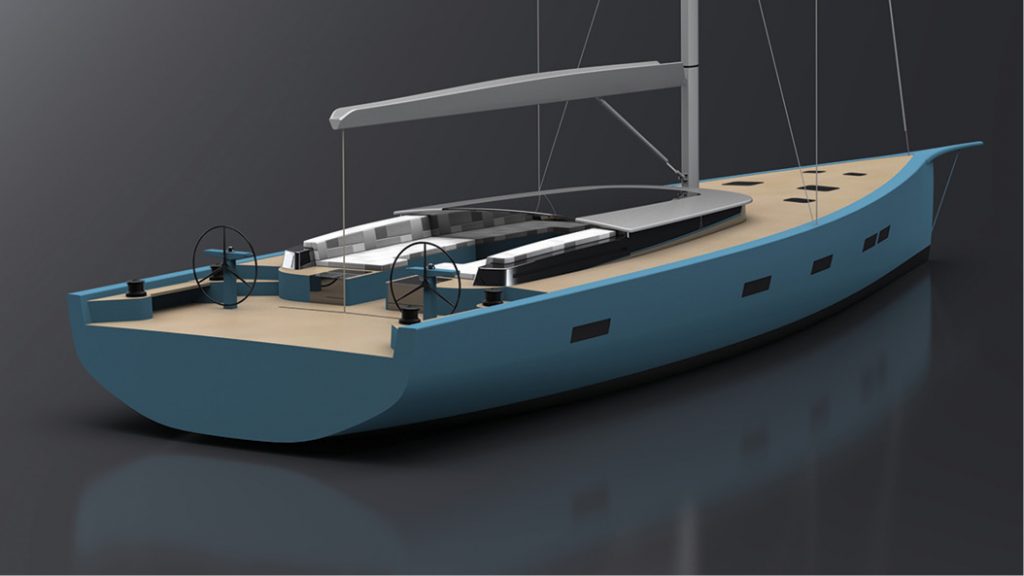
Y/Yachts “Y-7” designed by Tripp Design Naval Architecture
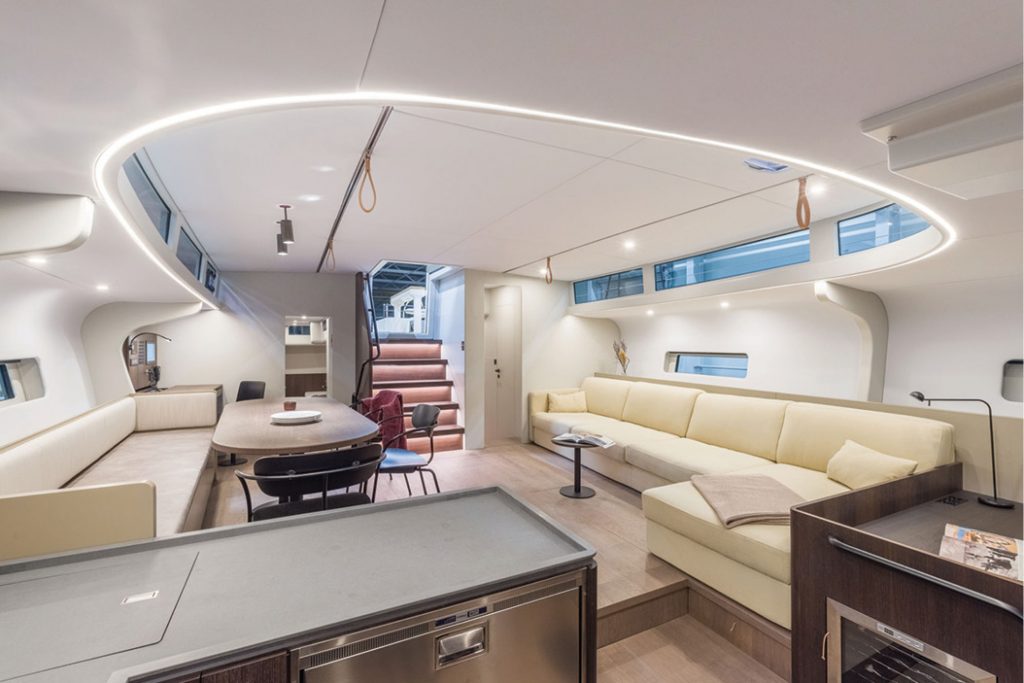
The Y-7 salon as viewed from the galley
The advent of carbon fiber masts, booms and even carbon roller furling units has drastically reduced weight aloft. In some yachts the standing rigging is now made of carbon fiber, further reducing the weight! This evolution has helped reduce the ballast necessary to keep the boat on its proper sailing lines ,or allowed for even greater sail area. Either choice promotes greater speed!
Sailing systems have been greatly improved as well. It is very common to have fully powered winches, powered headsail furling and either in-mast or in-boom mainsail furling. Physical strength used to limit what a sailor could handle while at sea. Innovation in better motors that drain less energy and more efficient systems has created a constant loop of improvements, allowing for larger and faster boats to be handled with fewer and fewer people.
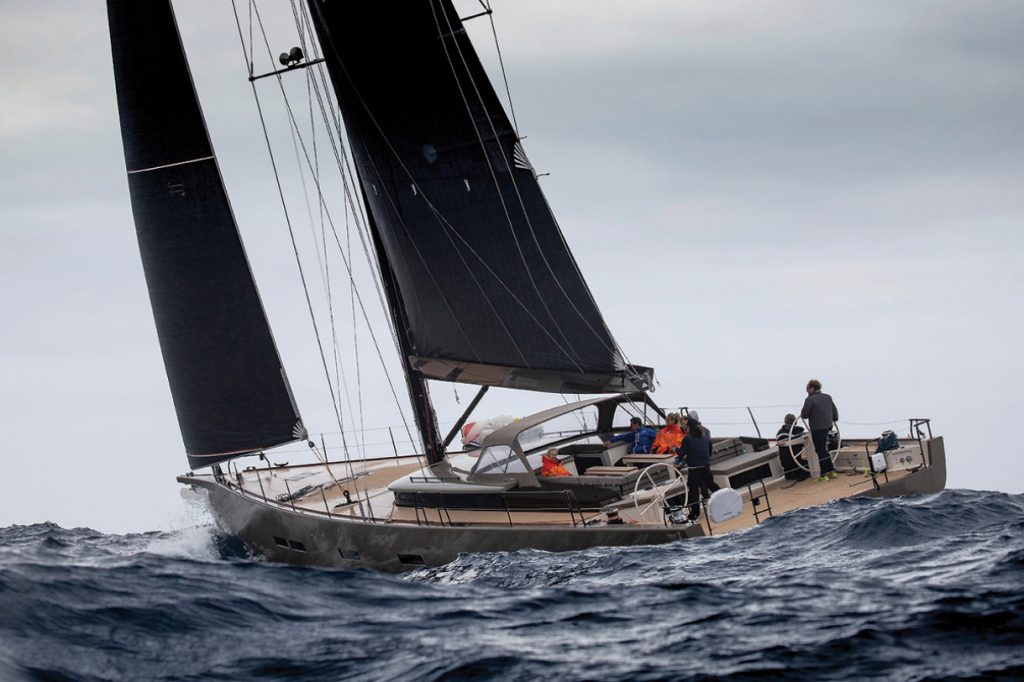
Y-7 hull #1 sailing off of Palma de Mallorca
Marine electronics have come a very long way! The GPS revolutionized how we use our boats! Now you hardly see a traditional navigation station on a boat. While in the past a bow thruster was common on a motor yacht, it was not until recently that they have become very commonplace on sailboats. Now with the advent of joystick piloting becoming commonplace on powerboats, it is quickly gaining use in sailboats to make docking by a cruising couple easier than ever by combining multiple engines and a bow thruster, which could eliminate the desire for a stern thruster.
It now seems that only the imagination limits what a sailor can achieve. Singlehanded sailors charge across oceans at speeds in excess of 25 knots! As marine industry experts, we continue working together, combining our talents to move the bar even higher in terms of performance and ease of use for our clients.
At Tripp Design Yacht Brokerage in Norwalk, CT, we offer the new Y/Yachts “Y-7” (Tripp 70) for sale, which Tripp Design N.A. designed. The Y-7 is one of these “leading edge modern luxury cruisers” I described above. If you had told me 40 years ago that a couple could sail a 70-footer by themselves I would have said you were crazy. Now they can!
As a final testimonial on how far these boats have come, the owners of one Y-7 came to the boat from a powerboat, as did their captain. They have been so impressed at how easy this boat is to sail that they’ve ordered the new 90-foot big sister to this design! ■
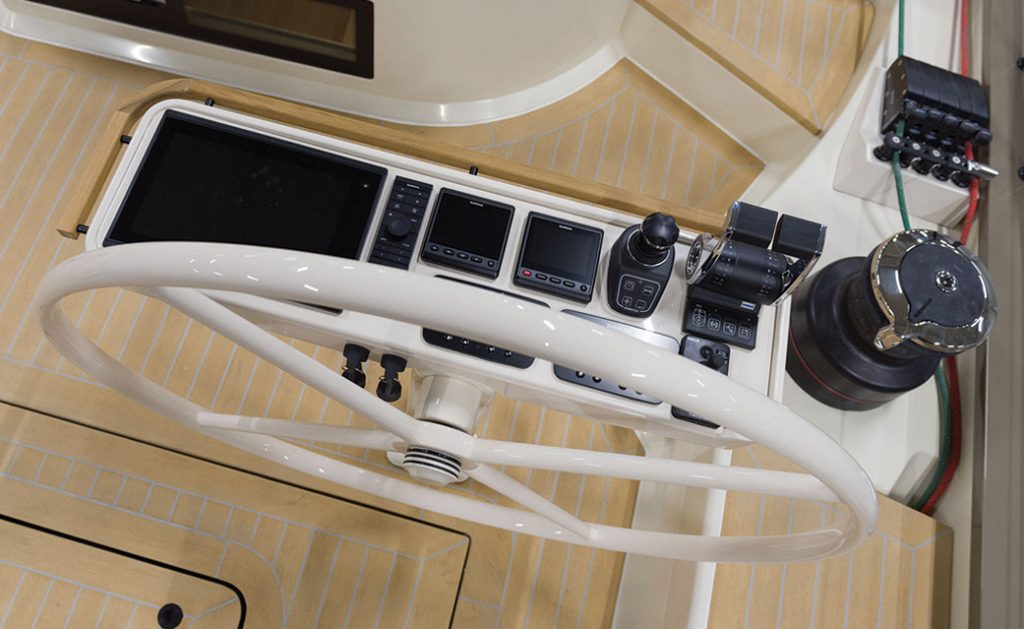
The Y-7’s dual helm stations have controls for the twin engines and “joystick” docking.
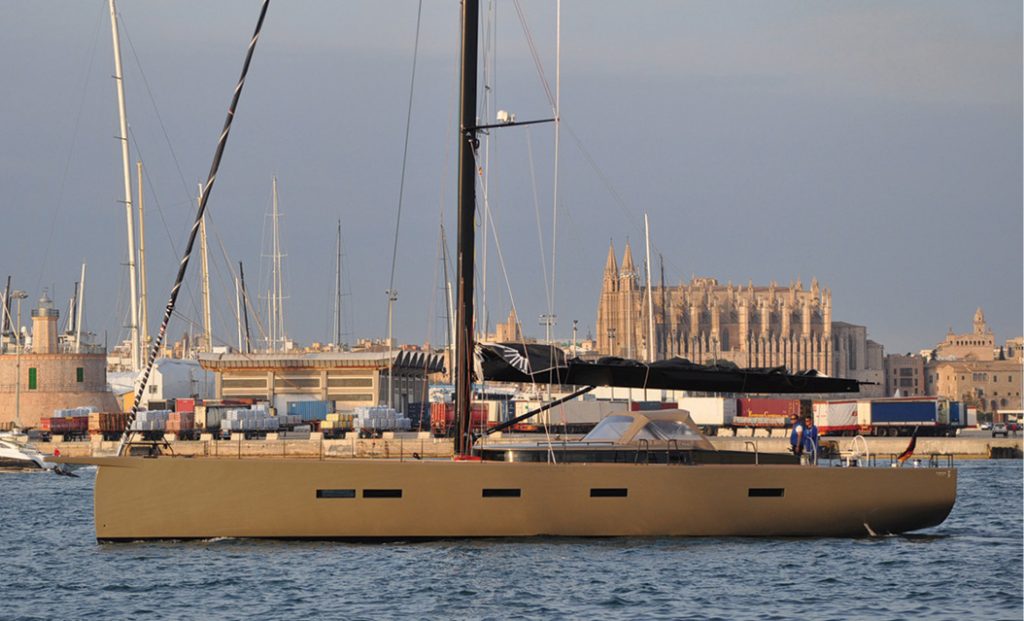
A Y-7 arriving at the Palma boat show after a 2,600 nm delivery from Greifswald, Germany
An avid offshore sailor and racer, Kevin Dailey has raced everything from dinghies to megayachts over 100 feet. He has raced up and down the U.S. East Coast as well as in the Caribbean, England, Germany, France and Italy, and is a frequent participant in superyacht races in Sardinia.
A yacht broker with Tripp Design Yacht Brokerage and Tait Yachts, Kevin can be reached at kevin@tripp.design. He formerly worked for North Sails, Nautor’s Swan and Sparkman & Stephens. A member of Stamford Yacht Club, Storm Trysail Club and New York Yacht Club, he lives in Norwalk, CT with his wife Victoria, who frequently races with him. Kevin’s also a superb photographer whose work can be seen at kevindaileyimages.com.




